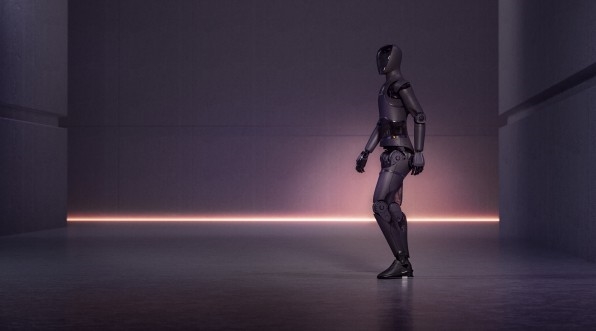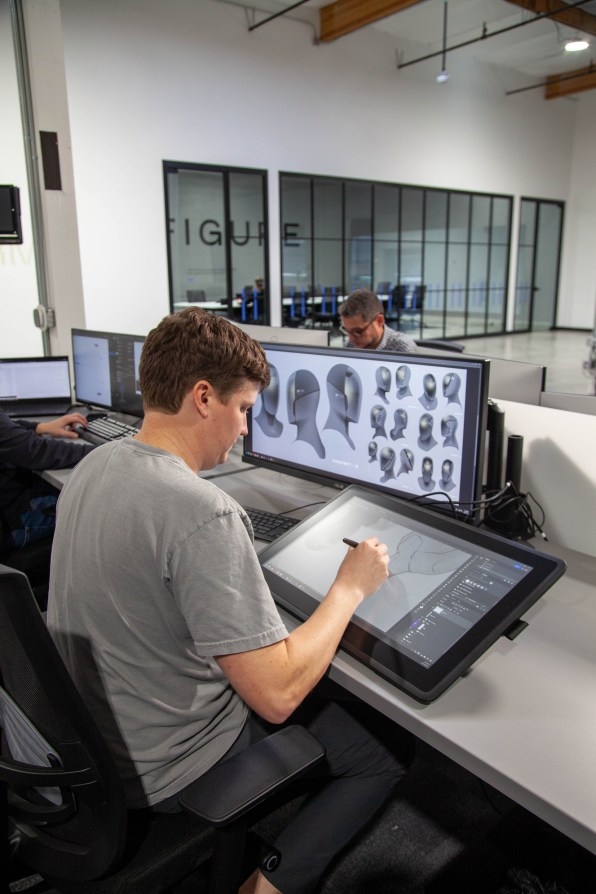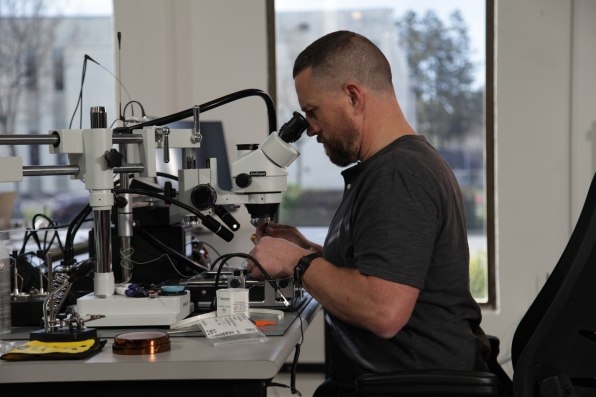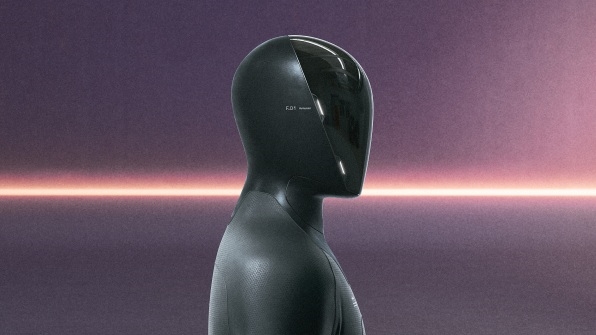A new humanoid walks among us.
Robotics startup Figure, which launched in 2022, has spent the last half year quietly developing a bipedal humanoid robot. That robot, named Figure 01, has just been unveiled publicly.

Modeled after the human form, Figure 01 walks on two legs and is intended to do manual labor that currently relies on actual living humans. With a labor shortage in the U.S. that numbers in the millions, Figure’s humanoid is designed to do the jobs people don’t want (or don’t have the skills for), and to eventually tackle more advanced tasks like caring for the elderly or even cooking meals.
Key to Figure’s robotics approach is its reliance on artificial intelligence to enable its robots to learn and improve their abilities. As movements and performance evolves, the robots can progress from basic lifting and carrying tasks to more advanced functions. That work will start out in the warehouse setting, doing the kind of heavy lifting that people don’t particularly enjoy.
“Our business plan is to get to revenue as fast as we can. And honestly that means doing things that are technically easier,” says Figure founder Brett Adcock.
Single-purpose robots are already common in warehouses, like the roving robots that carry boxes to shelves in Amazon fulfillment centers, and a robot created for DHL Supply Chain that unloads boxes from trucks at warehouse loading bays. Human-like robots could be a more versatile solution for the warehouse, Adcock says. Instead of relying on one robot to unload a truck and another to haul boxes around, Figure’s plan is to create a robot that can do almost anything a human worker otherwise would.
In some ways, it’s a narrower approach to the humanoid robot, which many other companies have sought to build. Honda’s Asimo was intended to help a range of users, from people with limited mobility to older folks needing full-time care. NASA has invested in humanoid “robonauts” that are capable of assisting with missions in space. Boston Dynamics has pushed the limits of robotics by creating humanoids that can jump and flip.
“Existing humanoids today have just been stunts and demos,” Adcock says. “We want to get away from that and show that they can be really useful.”

Adcock started the company with his own money, investing $10 million in 2022 alone. He previously founded and sold a hiring platform company called Vettery, as well as the electric vertical takeoff and landing aircraft company Archer Aviation, which recently went public through a special purpose acquisition company. He’s the majority shareholder, but left his role with the company nine months ago. Now he’s focused solely on Figure, and says he’s likely to invest upwards of $100 million in the company.
Adcock used this pool of funds to snatch up roboticists and AI experts from companies including robotics pioneer Boston Dynamics and robotics dabbler Tesla. Combining experience in robots, AI, sensing, perception, and navigation, Figure’s DNA is part autonomous vehicle, part robot arm.
Adcock says Figure has produced five prototypes of its humanoid. They’re designed to have 25 degrees of motion, including the ability to bend over fully at the waist and lift a box from the ground up to a high shelf. Hands will add even more flexibility and utility. That is the plan, at least. Right now, the prototype robots are mainly just walking.

Adcock expects to conduct extensive testing and refinement in the coming months, getting the robots to the point where they can handle most general warehouse applications by the end of the year. A pilot of 50 robots working in a real warehouse setting is being eyed for 2024. “Hardware companies take time,” he says. “This will take 20 or 30 years for us to really build out.”
With a reflective featureless face mask that may remind some viewers of a character from G.I. Joe, Figure 01 is a sleeker vision of the humanoid robots people may now be familiar with. Atlas, the walking, jumping, and parkour-enabled robot from the research wing of Boston Dynamics, for example, has prioritized mechanical skills over aesthetics.

Figure’s robot bears some similarity to Tesla’s Optimus robot. Announced in 2021 during a presentation featuring a human in a spandex robot suit, Optimus also aspires to a smoother form but its latest prototype looks more science science than science fiction.
Adcock says Figure’s robots use advanced electric motors, enabling smoother movement than the hydraulically run Atlas, which is allowing the prototypes to have a more natural gait while also fitting the mechanical systems into a smaller package. “We want to fool like 90% of people in a walking Turing test,” he says.
The concept is being built around the notion that the robot can be continually improved over time, learning new skills and eventually expanding into more complex tasks. Being able to do more, Adcock says, makes what could be a very expensive device much more affordable to build and buy. That could someday lead to Figure’s robots working in manufacturing, retail, home care, or even outer space. “I really believe that humanoids will colonize planets,” Adcock says.
For now, Figure is targeting the humble warehouse. “If we unveil the humanoid at some big event, it’ll just be doing warehouse work on stage the whole time,” Adcock says. “No back flips, none of that crazy parkour stuff. We just want to do real, practical work.”
(20)